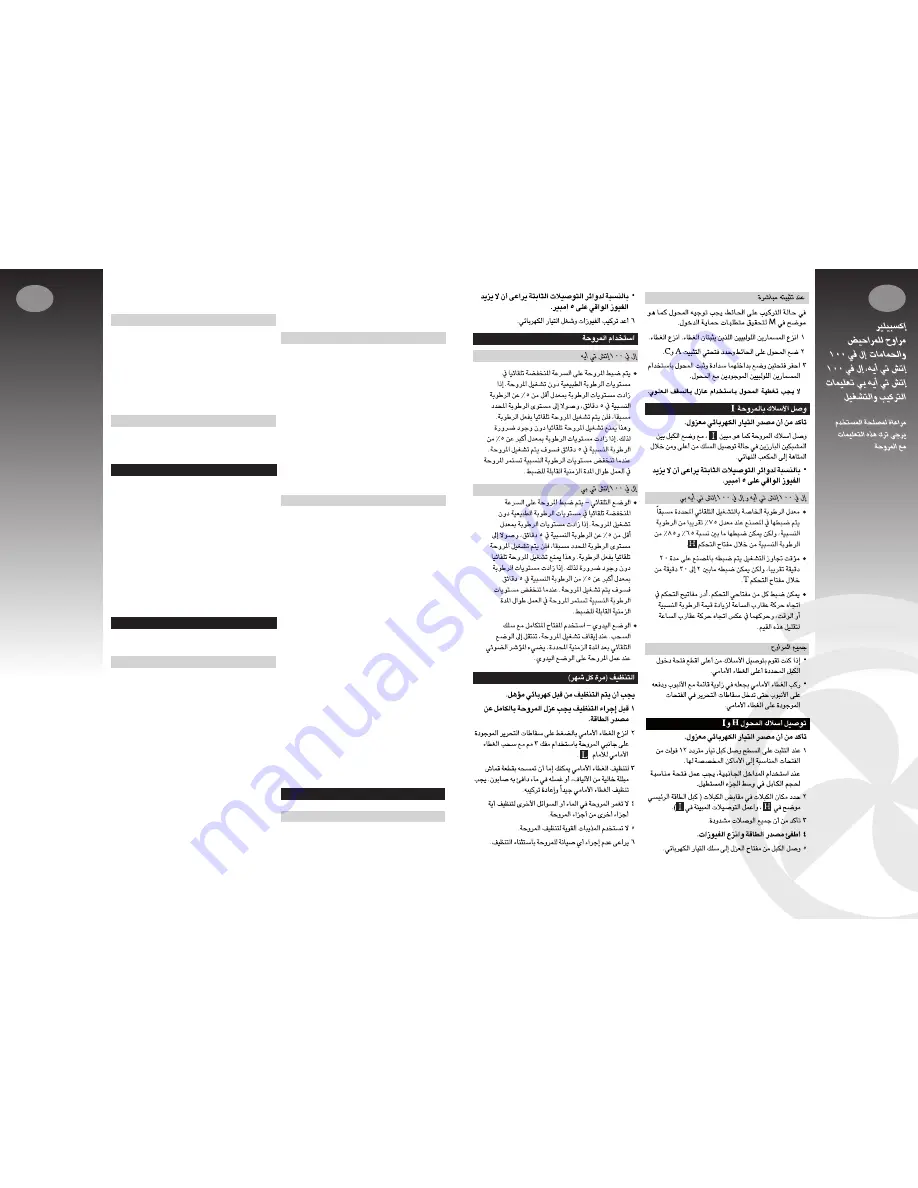
51
I
A
GB
Xpelair
Toilet/Bathroom
Fans LV100,
LV100PC, LV100T,
LV100HTA,
LV100HTAP &
LV100PIR
installation &
operating
instructions
Please leave this leaflet
with the fan for the
benefit of the user
6
recommended that you obtain a ready cut pane
for window installation.
If installing in a ventilation shaft
1
.
Check there are no buried pipes or cables
in the ventilation shaft.
If in doubt, seek professional advice.
2. Cut a hole 110mm in diameter, in the side of
the shaft.
3. If the shaft has cavity walls, use the wall tube to
bridge the cavity.
4. Fit ducting and condensation trap if necessary,
positioning condensation trap as near to the fan
as possible.
If installing in a ceiling
1 Check there are no buried pipes or cables in
the ceiling joists etc.
If in doubt, seek professional advice.
2 Cut a hole 115mm diameter.
Preparing the fan for installation
Remove the front cover by pressing the release
catches located on the sides of the unit with a
3mm screwdriver, whilst pulling the front cover
forward
L
If installing in a window or panel less than 16mm
thick, the fan spigot needs to be cut back to the
visible step 20mm away from the rear of the back
plate.
1. Remove the impeller by pulling it forward.
2. Cut the spigot back to the step using a junior
hacksaw, ensure that the motor shaft is not
marked by the hacksaw.
3. Remove any burrs from the edge of the spigot.
4. Refit the impeller by locating it onto the shaft
and pushing it on fully.
Mount the fan in the hole
If working above Ground Floor Level,
appropriate safety precautions must be
observed.
If installing in a wall, ceiling or vent
Mark the position of the back plate
B
1. Hold the back plate so that the terminal block
faces you in the left hand corner, and the lip
points towards the hole.
2. Carefully insert the lip into the wall duct/ceiling
or vent shaft.
3. Adjust the position of the back plate until it is
level.
4. Mark on the wall/ceiling or vent shaft the positions
of the three fixing holes in the back plate.
5. Remove the back plate from the ducting.
6. Drill screw holes in these positions if
necessary, and fit wall plugs if necessary.
Mount the back plate
C
1. Push the ribbed gasket (RG100) onto the lip of
the back plate
1
2. If installing in a ceiling or vent, push the larger
diameter piece of the telescopic wall tube onto
the ribbed gasket. Cut the tube to the required
length, if necessary.
3. If wiring the fan from behind, remove knockout.
Feed the mains cable through the cable entry
hole in the backplate to the terminals
D
4. If wiring from above, leave the cable free to be
fitted into labyrinth.
5. Insert the lip of the back plate into the wall
duct/ceiling or vent shaft as before.
6. Fasten the back plate to the wall/ceiling or vent
shaft using appropriate fasteners. If using
screws,
do not overtighten the screws.
Mount the back draught shutter
1. Peel the backing from the foam strip supplied
and attach it around the outside of the lip on
the back draught shutter.
2. Go outside. Holding open the top and bottom
vanes, insert the lip into the wall duct.
3. Making sure the back draught shutter is level,
mark the positions of the two fixing holes in the
top right hand and bottom left hand corners.
4. Remove the back draught shutters from the
wall duct.
5. Drill screw holes in these positions, and fit the
remaining wall plugs.
6. Holding open the top and bottom vanes, refit
the back draught shutter and fasten it to the
wall using the pointed end self-tapping screws.
Do not overtighten screws.
7. Make sure the vanes open and shut freely.
If installing in a window or panel
Sealing the hole
E
If installing in a window or panel no more than 9mm
thick, fit the white rubber gasket around the edge of
the hole. If installing in a panel or sealed double
glazing more than 9mm thick, a DXG Double
Glazing kit is required. Follow the instructions
supplied with the special kit.
Attach the back draught shutter to the spacer
F
1. Holding open the top and bottom vanes, insert
the back draught shutter
2
into the spacer
3
so
that the fixing holes in the top right and bottom
left hand corners match those on the spacer.
2. Insert two of the flat ended self-tapping screws
provided and fasten the back draught shutter
to the spacer.
Mount the fan in the window
G
1. Someone else must hold the back draught
shutter and spacer in position outside, with the
spacer against the glass.
2. Make sure that the two raised fixing holes in
the spacer are horizontal and are positioned
within the hole.
3. From inside, hold back plate so that the
terminal block faces you in the top left hand
and the lip points towards the hole.
4. Align the holes in the back plate with those in
the spacer.
5. Insert two of the flat ended self-tapping screws
provided in the fixing holes, and fasten the
back plate to the spacer.
Do not overtighten
the screws.
Mounting the transformer
H
The transformer can be fixed directly to the wall.
Fixing directly
When wall mounting, the transformer must be
orientated as shown in
M
to fulfil ingress
protection requirements.
1. Remove two screws securing the cover,
remove cover.
2. Position the transformer on the wall and mark
the two fixing holes “A” and “B”.
3. Drill and plug the two holes and fix the
transformer with two pointed end self-tapping







































